Effective Guide on How to Begin Compost Bin Without Worms
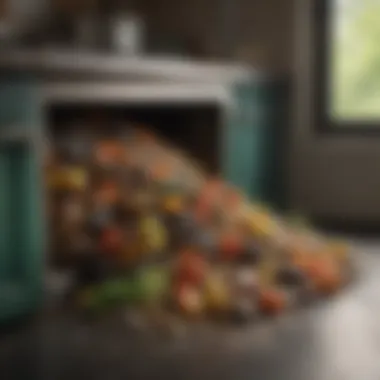
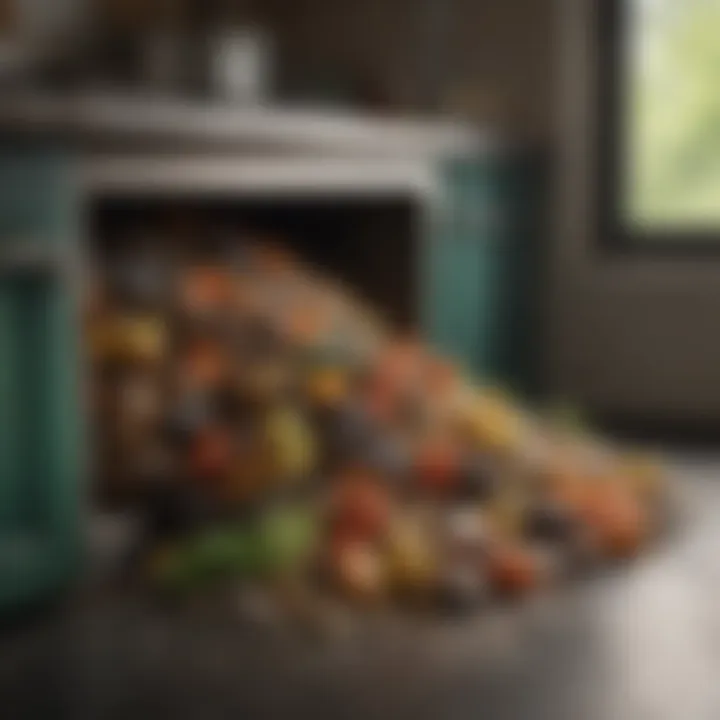
This article aims to be a holistic guide for individuals looking to kickstart their composting journey without relying on worms. For those seeking alternative methods for effective waste management, this comprehensive guide explores various techniques that do not involve worms, catering to the preferences and constraints of a diverse audience.
Section One: Setting the Foundation
To begin the composting process without worms, it is crucial to establish a solid foundation. This includes selecting a suitable bin or container for composting, ensuring proper aeration, and layering your browns and greens effectively. The choice of materials like dried leaves, vegetable scraps, and paper waste plays a vital role in creating a conducive environment for decomposition while minimizing odors and pests.
Step One: Choosing the Right Container
The first step in starting a worm-free compost bin is selecting the appropriate container. Whether opting for a homemade bin or a purpose-built one, factors such as size, drainage, and insulation are paramount. Ensure the bin allows for proper air circulation to facilitate microbial activity and decomposition within the pile.
Step Two: Layering Techniques
Layering organic matter is key to the success of your compost. Browning layers, consisting of carbon-rich materials like dried leaves or cardboard, must alternate with greening layers, such as kitchen scraps and grass clippings. This balance of carbon and nitrogen-rich materials accelerates decomposition and fosters the growth of beneficial organisms essential for the composting process.
Section Two: Managing the Composting Process
Once your compost bin is set up, it is imperative to manage it effectively to ensure optimal decomposition and nutrient-rich compost production. Turning the compost regularly to aerate the pile, monitoring moisture levels, and adjusting the composition of materials are essential tasks to maintain the health of your compost without worms.
Step Three: Aerating the Compost
Aerating the compost aids in oxygenating the pile, facilitating the breakdown of organic matter. Regularly turning the compost with a pitchfork or compost aerator ensures that beneficial microorganisms thrive in an aerobic environment, enhancing decomposition rates and minimizing the risk of unpleasant odors.
Step Four: Monitoring Moisture Levels
Maintaining the right moisture content is critical for a successful composting process. Checking the moisture levels regularly and adjusting as needed to keep the compost pile damp but not waterlogged is pivotal. Dry compost slows decomposition, while overly wet conditions can lead to anaerobic decomposition and foul odors.
Section Three: Harvesting and Using Compost
Harvesting and utilizing the nutrient-rich compost from your worm-free bin marks the culmination of your composting journey. The finished compost can be incorporated into garden soil, used as mulch, or brewed into compost tea for an organic fertilizer boost in your garden.
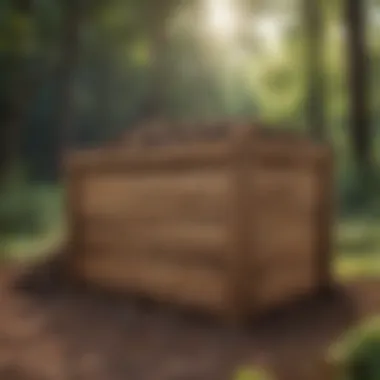

Step Five: Harvesting Compost
To harvest compost, allow the materials to decompose fully and reach a dark, earthy texture. Sieve out any large particles or uncomposted material, ensuring that only finished compost is collected for application. This well-balanced compost serves as a natural soil conditioner, enriching the soil with essential nutrients.
Step Six: Using Compost in the Garden
Utilizing compost in your garden improves soil structure, enhances moisture retention, and provides a rich source of nutrients for plants. Mix the compost into the soil before planting or apply it as a top dressing to enrich the existing garden beds. The organic matter in the compost fosters healthy plant growth and reduces the need for synthetic fertilizers.
Conclusion: Embracing Sustainable Waste Management
Introduction
Starting a compost bin without using worms is a sustainable and eco-friendly way to manage organic waste. In this comprehensive guide, we will delve into alternative composting methods that do not rely on worms. Composting plays a vital role in reducing greenhouse gas emissions, enriching the soil, and diverting waste from landfills. By exploring worm-free composting techniques, we cater to individuals who prefer not to work with worms or may not have access to them. The absence of worms in the composting process opens up a new avenue for waste management, allowing for innovative solutions that align with sustainable practices and environmental consciousness. It is essential to understand the significance and benefits of starting a worm-free compost bin, as it contributes to a greener and healthier environment. Throughout this article, we will guide you through the process of establishing and maintaining a worm-free compost system, providing insights, tips, and troubleshooting strategies to ensure successful composting without worms.
Understanding Composting
Composting is a vital aspect of waste management and environmental sustainability. In the context of this article, understanding composting is crucial as it lays the foundation for starting a compost bin without worms. By grasping the principles of composting, individuals can explore effective alternatives without compromising on the quality of the compost produced. This section delves into the intricacies of composting, shedding light on the various methods and techniques that can be employed to create nutrient-rich soil amendments. Understanding composting not only facilitates the reduction of organic waste but also enables individuals to contribute to a greener, more eco-conscious world.
Definition of Composting
Composting can be defined as the natural process of decomposing organic materials into a nutrient-rich substance known as compost. This process involves the breakdown of organic matter by microorganisms under controlled conditions. Through composting, materials such as kitchen scraps, yard waste, and other biodegradable items are transformed into a valuable soil conditioner that enhances soil structure and fertility. Understanding the definition of composting is fundamental to grasping how organic waste can be recycled and repurposed to benefit the environment and promote sustainability.
Benefits of Composting
The benefits of composting are manifold and far-reaching. Composting aids in the reduction of landfill waste by diverting organic materials from disposal sites. It also helps to enrich the soil with essential nutrients, thereby improving plant growth and health. Furthermore, composting plays a critical role in reducing greenhouse gas emissions, as organic matter decomposes anaerobically in landfills, releasing methane—a potent greenhouse gas. By engaging in composting practices, individuals can actively participate in waste reduction efforts and promote a more sustainable approach to managing organic resources.
Choosing a Composting Method
Composting is a crucial step in reducing waste and enriching soil. In the context of this article on starting a compost bin without worms, choosing the right composting method is key to success. It sets the foundation for effective waste management and soil improvement. By selecting a suitable composting method, individuals can play a significant role in eco-friendly practices.
Traditional Composting vs. Vermicomposting


Traditional composting involves the decomposition of organic matter by microorganisms and macroorganisms like bacteria, fungi, and insects. On the other hand, vermicomposting utilizes worms, specifically red wigglers, to break down organic material. While traditional composting is ideal for larger outdoor spaces and yard waste, vermicomposting is more compact and suitable for indoor settings or smaller gardens.
Alternative to Worm Composting
Hot Composting
Hot composting is a method that promotes rapid decomposition by maintaining high temperatures within the compost pile. This process accelerates the breakdown of organic matter and can produce usable compost in a shorter time frame. The key characteristic of hot composting lies in the balance of green and brown materials, along with regular turning and aeration. This method is advantageous for those seeking quick results and efficient waste management.
Bokashi Composting
Bokashi composting is a fermentation process that involves the use of beneficial microbes to break down organic matter. This anaerobic method is suitable for kitchen scraps and food waste, creating a nutrient-rich liquid that can be used as a fertilizer. Bokashi composting is odorless and compact, making it an ideal choice for urban settings or areas with limited space. Its unique feature lies in the ability to process a wide variety of organic materials without unpleasant odors.
Trench Composting
Trench composting is a simple technique that involves burying organic waste directly into the ground. By digging trenches and layering food scraps and yard waste, nutrients are gradually released into the soil as the materials decompose. This method benefits the soil structure and fertility without the need for a separate compost bin. Trench composting is a convenient option for enriching garden beds and requires minimal effort once established. Its advantage lies in the direct nourishment of soil and plants, promoting natural growth without the use of store-bought fertilizers.
Setting Up a Worm-Free Compost Bin
Worm-free composting is a smart choice for individuals seeking an eco-friendly waste management solution without relying on worms. When you embark on the journey of establishing a worm-free compost bin, you are not only reducing kitchen and yard waste but also creating nutrient-rich soil amendment for your plants. This section delves into essential aspects of setting up a compost bin without worms, highlighting the importance of choosing the right container and adding the appropriate compost materials.
Choosing the Right Container
Selecting the proper container is crucial when setting up a compost bin sans worms. Opt for a container that is sturdy, durable, and provides adequate airflow without letting compost spill out. Consider using a ventilated plastic bin, a wooden crate, or a metal container with drainage holes to ensure effective composting. The size of the container should be based on the amount of waste you generate to maintain a healthy composting process. Ensure the container is placed in a convenient location that receives partial sunlight and is easily accessible for adding materials and monitoring the composting progress.
Adding the Compost Materials
Adding the right mix of compost materials is fundamental for the success of a worm-free composting system. Start by layering brown and green materials to create a balanced compost pile; brown materials include dried leaves, straw, and shredded paper, while green materials consist of fruit peels, vegetable scraps, and grass clippings. Aim for a mix of 2:1 ratio of brown to green materials to encourage proper decomposition and prevent odors. Remember to regularly turn and aerate the compost pile to facilitate the breakdown process and maintain optimal moisture levels for efficient composting.
This guide emphasizes the significance of establishing a worm-free compost bin by focusing on container selection and material addition. By following these steps diligently, you can ensure a successful composting experience without worms, promoting sustainability and environmental consciousness in your daily waste management practices.
Maintaining and Troubleshooting
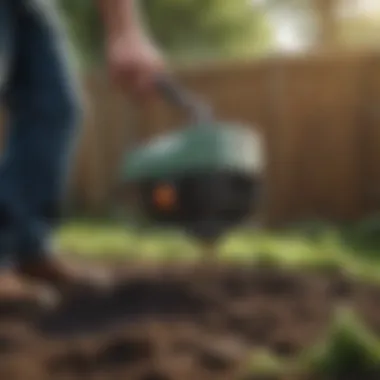
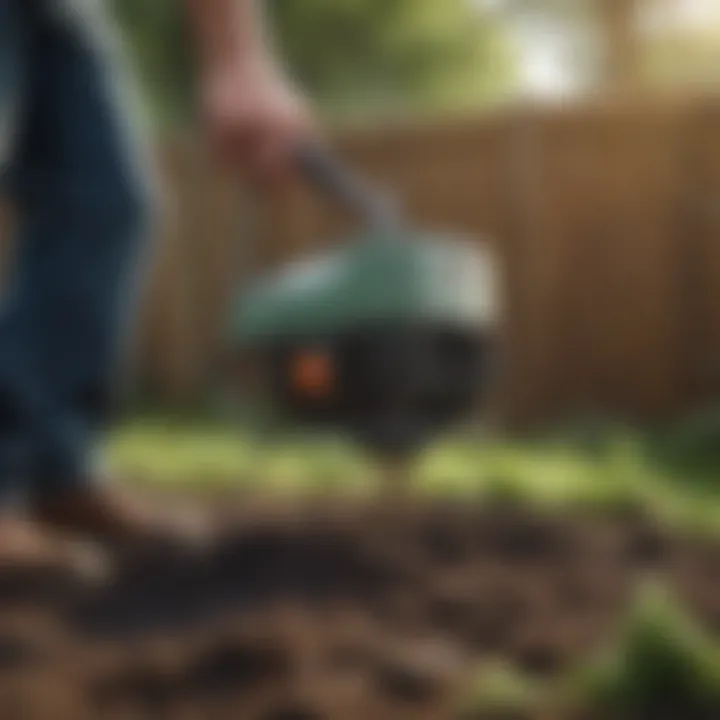
In composting, the stage of maintaining and troubleshooting plays a critical role in ensuring the success of your composting journey. It involves various elements that are essential for the proper decomposition of organic materials and the prevention of any potential issues that may arise during the process. By focusing on maintaining and troubleshooting, you can actively address challenges and maintain a healthy compost pile, leading to the production of nutrient-rich compost for your plants.
Turning and Aerating the Compost
Turning and aerating the compost is a fundamental aspect of the composting process that enhances microbial activity and promotes even decomposition. This process involves physically turning the compost pile using a pitchfork or shovel to introduce oxygen into the pile. By regularly turning and aerating the compost, you create a more oxygen-rich environment, facilitating the breakdown of organic matter and preventing the formation of a compacted or anaerobic pile. This promotes a faster composting process and helps eliminate foul odors by maintaining aerobic conditions within the pile.
Managing Moisture Levels
Proper moisture management is key to a successful composting process. Maintaining the right level of moisture in your compost pile is essential for optimal decomposition. A compost pile that is too dry will decompose slowly, while a pile that is too wet may lead to unpleasant odors and the growth of anaerobic bacteria. By regularly monitoring and adjusting the moisture levels of your compost pile, you can create an environment that is conducive to the activities of beneficial microorganisms, ensuring efficient decomposition and nutrient-rich compost.
Identifying and Solving Common Issues
Foul Odors
Foul odors in a compost pile can indicate an imbalance in the composting process, often resulting from anaerobic conditions or the presence of materials that are slow to decompose. To address foul odors, ensure proper aeration by regularly turning the compost pile. Additionally, avoid adding meat, dairy, or oily foods, as these can contribute to unpleasant smells. Incorporating carbon-rich materials like dry leaves or paper can help absorb excess moisture and mitigate foul odors.
Pests
Pests in the compost pile can disrupt the composting process and damage your compost heap. Common pests include fruit flies, ants, and rodents attracted to food scraps in the pile. To deter pests, avoid adding cooked food, meat, or dairy products to the compost. Consider covering the compost heap with a layer of mulch or adding wire mesh to prevent pests from accessing the pile. Regularly turning the compost can also help deter pests by disturbing their habitat.
Slow Decomposition
Slow decomposition can occur due to a lack of proper balance in the compost pile. To accelerate the decomposition process, ensure the right mix of green and brown materials. Green materials provide nitrogen for microbial activity, while brown materials offer carbon for structure and aeration. Consider shredding large materials to speed up decomposition. Maintaining the ideal moisture and aeration levels in the compost pile can also help facilitate faster decomposition, producing nutrient-rich compost in a shorter time.
Using the Finished Compost
Using the finished compost is a crucial step in the composting process that offers numerous benefits for your garden and the environment. After patiently waiting for the organic materials to break down into rich, dark compost, it's time to reap the rewards of your effort. The finished compost is a nutrient-rich soil amendment that improves soil fertility, enhances plant growth, and helps retain moisture in the soil. By using the finished compost, you are engaging in sustainable waste management while enhancing the health of your garden ecosystem.
It is essential to understand that proper harvesting and curing of the compost are vital steps to ensure the final product is of high quality. Harvesting involves separating the usable compost from any remaining organic materials that have not fully decomposed. This process may take a few weeks to months, depending on the composting method used and environmental conditions. Curing the compost involves allowing it to mature further, which helps stabilize the nutrient levels and ensures that beneficial microorganisms are ready to work their magic in the soil.
When applying compost to the soil, there are several considerations to keep in mind. The compost should be spread evenly over the gardening area and gently mixed into the soil to promote uniform nutrient distribution. It is crucial to avoid smothering plant roots with a thick layer of compost, as this can hinder root growth and water penetration. Additionally, incorporating compost into the soil helps improve soil structure, aeration, and drainage, creating a healthy growing environment for plants.
Overall, using the finished compost is a sustainable practice that not only reduces waste but also enriches the soil, promotes plant growth, and fosters a healthier garden ecosystem. By following proper harvesting, curing, and application techniques, you can maximize the benefits of your compost and contribute to a greener, more vibrant garden.
Conclusion
In the realm of composting without worms, the conclusion serves as the culmination of a process that defies traditional methods yet produces equally fertile results. This essential segment ties together the intricacies of setting up and maintaining a worm-free compost bin. By opting for worm-free composting, individuals open doors to sustainable waste management practices. The significance of the conclusion lies in its ability to offer an environmentally friendly solution to those averse to or lacking access to worms. Not only does this conclusion underscore the adaptability and versatility of composting techniques, but it also underscores the commitment to reducing waste and nurturing the ecosystem in a non-conventional manner. Through a lens of practicality and innovation, the conclusion cements the idea that effective composting does not necessarily hinge on the presence of worms, but rather on the commitment to responsible environmental stewardship and resource management.



